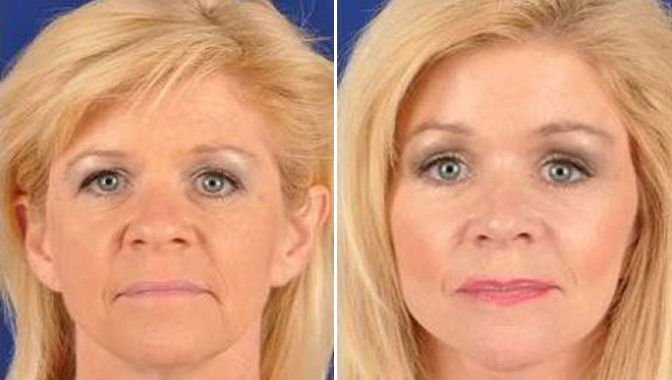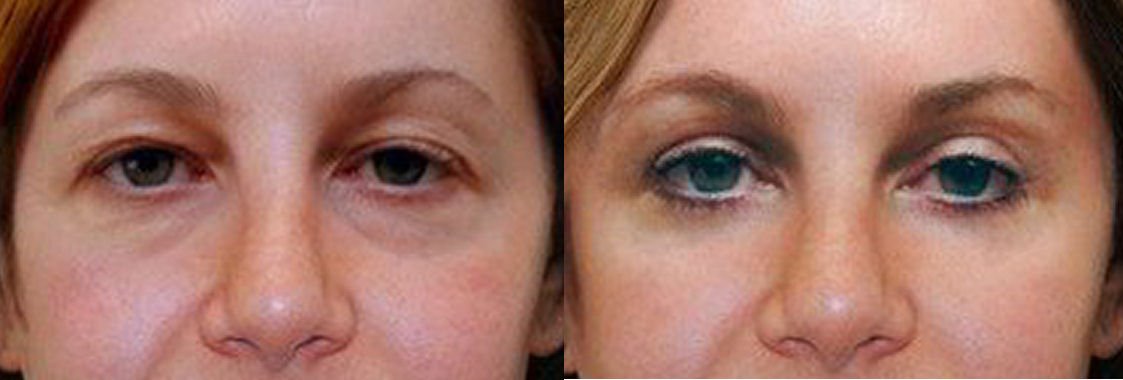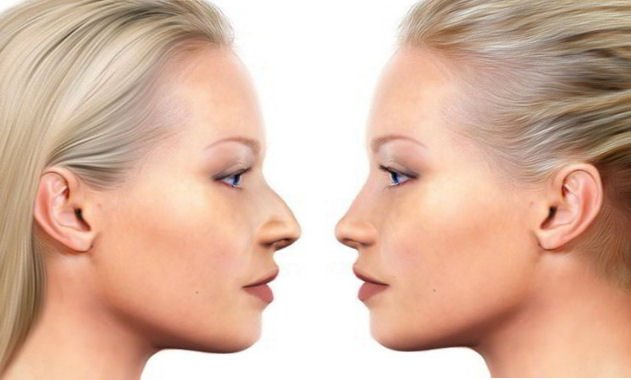Face Surgery
Our 3 Most Popular Face Procedures
Your face is your identity to the world.
Eyes, nose, jawline, all tell a story about your age, status, and desirablility.
Facelift
A facelift, also known as rhytidectomy (removing of wrinkles by surgery), is a cosmetic surgery procedure that removes excess or loose facial skin to give the face a younger look. Loose facial skin is removed, accompanied by tightening and redraping on the patient’s neck and face.The surgery begins with an incision from the front of the ear to the hairline region. After this, the skin is detached from the deeper tissues with scissors or scalpel (known as undermining) on the neck and cheeks. Then the facial skin is tightened and sutured. Typical recovery period for this surgery is 2-3 weeks.
There are several different facelift variants depending on amount of correction, areas to be targeted, and patient pre-exisitng conditions.
Traditional Facelift:
A traditional facelift procedure involves incisions around ears, hairline and below the chin. Skin is separated from the underlying tissues, while muscles and other supporting structures of face and neck are tightened. The surgeon will also remove excess fat from the neck and jowls as necessary.Deep Plane Facelift:
In a deep plane facelift surgery, the surgeon lifts the SMAS (superficial musculoaponeurotic system, i.e., facial musculature), fat, and skin as a single unit. Deep plane lifts typically correct multiple areas of the face at the same time. The most advanced variant of this technique is what's called Minimal Access Deep Plane Extended Lift.Mini-Facelift:
Mini-facelift surgeries focus on lifting your lower face and neck area. As a less invasive procedure, the mini-facelifts is indicated for younger patients or for patients with reduced or early facial tissue sag.Typical recovery time for all facelift variants is 3-5 weeks.

Eye Lift (Blepharoplasty)
Blepharoplasty, better known as Eye Lift surgery, is a facial cosmetic surgery method used for the modification of eyelids. The surgery is performed to correct the ptosis (better known as sagging eyelids), or to remove hanging skin and/or fatty bulges under the eye.
These problems derive from multiple causes including genetics, sun damage, and age-related loss of skin elasticity. Older patients who exhibit persistent puffiness and wrinkling find eye lift surgery to be useful as part of a facial rejuventation strategy, especially where non-surgical cosmetic solutions have delivered unsatisfactory results.
During a blepharoplasty, external incisions are made along the lines of the eyelids, along the creases of the upper eyelids and below the eyelashes of the lower eyelids. Excess fatty tissue is thereby exposed and removed. A more youthful appearance is further achieved by tightening of remaining skin.
Care must be taken to conceal all incision lines and this is achieved by hiding them in the natural skin folds, eyelid lash lines, or under the lower eyelid. A successful blepharoplasty will be completely undetectable to the casual observer.
Blepharoplasty is usually performed on an outpatient basis under local anesthesia, depending on the amount of reconstruction needed, the patient’s preference, and health. The procedure lasts from 1 to 2 hours. Patients post-op will experience some bruising, swelling and discomfort with full recovery after about 6 weeks.

Rhinoplasty
Rhinoplasty, or nose correction surgery, is a facial cosmetic surgery method used to enhance, correct or reconstruct the appearance of the nose. Suitable patients can be of any age group as this surgery serves many purposes. For example, a rhinoplasty can alter the width of the nose at the bridge, modify the tip, straighten deviations in profile, balance asymmetry, or reduce the overall size relative to other facial features.The 3 typical purposes of the procedure are to
1. Improve cosmetic appearance
2. Revise a previously unsatisfactory surgery
3. Improve nasal functionality
There are two types of rhinoplasty – Open Rhinoplasty and Closed Rhinoplasty.
Open (or external) Rhinoplasty uses incisions made inside the nostrils and adds a small lateral incision (trans-columellar incision) which allows the nasal skin to be folded upward opening surgical access to nasal internal structures.
Closed Rhinoplasty (endonasal rhinoplasty), uses surgical incisions that are positioned within the nostrils. This endonasal approach can reduce numbness and swelling, as well as reduce recovery time. While a closed rhinoplasty offers better concealment of scars, it limits the surgeon’s view of internal nasal structures, thereby narrowing the range of restructuring and repositioning options.
With both types, some bone and cartilage may be removed, or a bone graft or autologous cartilage may be added. After the surgeon has rearranged and reshaped the bone and cartilage, skin and tissue are re-draped over the structure, and incisions closed. At that point, the surgeon applies an internal/external support to immobilize and facilitate undisturbed healing, which typically lasts 1-2 weeks with further settling for up to 3 months.
